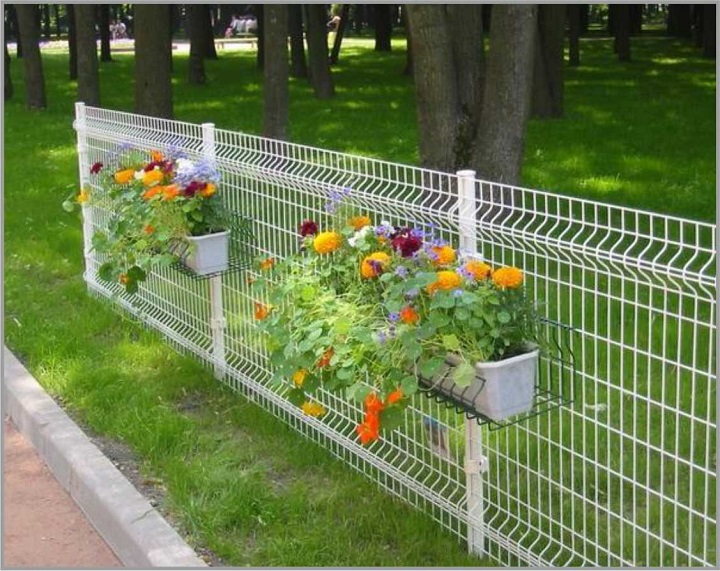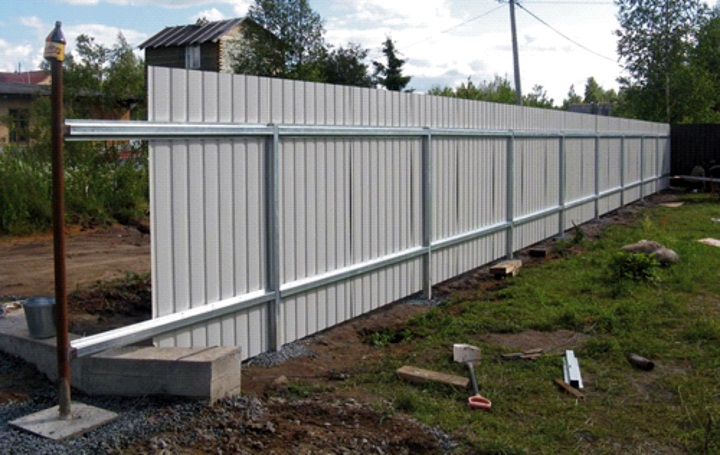Most often, wooden fences, photos of which are given below, are constructed with a significant amount of lumber remaining from the construction of the main dwelling. Despite the attractiveness of the designs, they require high operating costs.
The industry produces ready-made sections for fencing the territory from plastic, reinforced concrete, metal mesh coated. Fences of high artistic value can be made from scrap materials with your own hands.
A double fence is just what it sounds like: a fence around your garden and another fence a couple of feet around it. A simple four-foot fence on the outside perimeter is enough to attract a deer's attention. When they see another fence a couple feet away, they tend to get nervous about doing both fences versus planting in between.
Fences that are just one foot apart are not good option. When we install double fences, we aim for 3-4 feet between them. You may have to move your perimeter a couple of times to find out what works best with the deer in your area. When you talk to locals in my area, this is the fence that is most beneficial when a 10 foot fence is not an option.
Fences for dachas are regulated by several official documents, the requirements of which must be taken into account when designing in order to avoid fines or bringing them back to normal in court. The main ones are:
- charter of a gardening society/partnership - the height of fences between plots is usually regulated, which causes excessive darkening of the area when choosing blind sections
- building standards - adopted by the local administration, they concern both height (in 90% of cases) and a uniform style throughout the entire holiday village (very rarely)
- regional, state PZZ - rules of development, land use
- construction standards SNiP - they contain only general principles, recommended, but not mandatory
In practice, with a reasonable fence height (3 - 2 m), the owner of the site usually does not have any problems; special requirements for the design style of the village administration are voiced in order to avoid a zero cycle at the construction stage, when there is no permanent fence to ensure access for special equipment to the building site.
A four-foot wide fence at 45 degrees is the most intimidating fence a deer will encounter. According to my neighbor Forest Ranger, when the fence is at 45 degrees, the deer cannot gauge depth. While some may be tempted to raise it to a wider angle instead of getting a taller fence, the deer will be better at judging distance as the height rises to eye level and the angle becomes shallower. The lower angle also makes it easier to measure the distance between deer.
Already existing deer fence
In our area in particular, corner fencing is also very effective at keeping out elk, raccoons and bears. It doesn't seem to matter whether the fence fits or not. What's really important is that it's at a 45 degree angle. Do you already have a fence and don't want to tear it down and start over?
For shorter fences, try running baling twine along the tops of the posts, creating the appearance of taller fences. You can see where we did this in some of the 4 foot fences last year. Do not add twine at the 6-foot level, as this will likely increase the chance of injury to the deer. Is your fence already 6 feet tall? Consider interlacing branches at the top or top to give it a taller look. This will encourage the deer to walk around. Create your second fence with what you have. Pallets, crowbar, rope on a pole. Remember, this second fence is not needed to remove the deer, but to create depth. A DIY fence reduces the construction budget, allows you to choose a design that is convenient for the developer, and get rid of scraps of lumber, roofing, and facade cladding. Sections can be made from almost any material: When Bing Crosby immortalized these words in song, it is clear that he was not really living the life of farmers. For properties containing animals, fences are a necessity. Depending on the size of your property, fencing can be one of the largest and most expensive farm jobs. So, what are the advantages of electric fencing versus traditional fencing? When considering fencing options, you'll want to start with a few criteria to make sure you're the right fit. Are you trying to contain animals inside interior fences or contain animals? Depending on the resource, decorative value, technology for manufacturing fences and gates, the price differs significantly. Minimum prices are traditionally available from manufacturers of ready-made sections that sell products without intermediaries. The installation service in these organizations is cheap, the teams have regular practice, and fence off areas in a couple of days. You may have to choose an option based on what you can afford now. If you can, weigh the costs over time, including the cost of repairing and maintaining your fences. All fences will require some form of inspection and maintenance to ensure their integrity. Some types of fence take more attention than others. How long do you need to maintain your fencing, and how long do you want it to last? There are a huge number of fencing options and materials available. In general, they sit in two main categories: traditional and electric fencing. Traditional fencing is based on placing a physical barrier between areas in your territory. Options include wood and wire fencing options. Some materials are stronger than others - you will need to consider the types of animals you include or exclude when making your selection. The fence consists of blind sections hung on pillars fixed in various ways into the ground. In front of the main facade of the building, instead of blind sections, gates and wickets are used, which can be duplicated along the perimeter. Automatic fence gates have the highest prices, which is due to increased operating comfort. Sliding, swing-type structures that can be opened manually are much cheaper and are energy-independent structures with a minimal operating budget. The service life of the structure, regardless of the filler material of the sections, completely depends on the quality of installation of the pillars using one of the technologies: The most popular traditional fencing options in Australia include. Wood fences are an old-fashioned choice. They are made from local hardwood or treated wood that is rot and termite resistant. This style is also known as post and rail fencing and is popular with horses. Wooden rails can also be combined with concrete or steel posts. New “wood look” options, such as composite plastic fences, provide the look and strength of wood without the maintenance. The only advantage of wooden beams is the easy fastening of sections; the resource of wood is much less than rolled metal and brick; the material requires regular painting. To fix the spans to the brickwork, embedded elements are left in the seams or the sections are secured with anchors into blind holes drilled in the stone. Metal purlins are welded to posts made of the same material, which requires special equipment. Wooden fences are strong and durable and look picturesque. They are also very visible, which is an important factor in horse paddocks and training yards. Wood fences can be expensive to install. They require a lot of labor to dig and build posts and maintain them over time, especially in sunny or wet climates. You will need to periodically repaint or stain your wood fences to keep them in good condition. Combined plastic "wood look" alternatives require less maintenance but cost more. A more exotic way of fixing the horizontal crossbars on which the picket fence is hung is to cut a thread from a plastic bottle. It is used to tie the structural elements crosswise and briefly heat the knot with an open flame until the material is completely fused. The disadvantage of the connection is the zero maintainability of the nodes. Simple wire fencing uses strands of wire stretched between mesh or posts. Low-strength galvanized wire of standard or heavy weight is used for fencing. Heavier galvanized wire is more resistant to corrosion and is suitable for humid climates or coastal areas. High tensile wire creates a stronger fence suitable for high pressure situations. The advantage of high strength wire mesh fencing is its elasticity, if an animal bumps into it, it can absorb more pressure and will not get caught easily. Simple wire is long lasting, easy to install and inexpensive. For large animals such as cattle, one or two strands of wire may be sufficient, although four to five strands are most common. They are suitable for properties with undulating lands and slopes as the wire is flexible. Because many fence posts are required to support the wire, labor costs for installing this type of fencing can be high. Depending on the type of livestock that may be kept, different numbers of wires and spacing may be required. Gates and gates of the swing type are hinged on posts, the sliding sections move along the fence on lower and upper rollers. Entrance groups can be lined with the same materials as the fence sections, ensuring unity of style and a discreet location of the entrance. To enhance the aesthetics of the perception of exterior fences, expensive cladding and forged openwork elements are often used. Barbed wire consists of two stands of wire twisted together to form sharp burrs every 10 cm along the length of the wire. It is often used for security as well as livestock fencing. Barbed wire is strong and cheap. Barbed wire separates the stock from rubbing against the fence, which can be one of the main causes of damage to the fence, especially by cattle. It is also cost effective for longer fencing lengths. Barbed wire fencing lasts between 7 and 12 years and can require a high degree of upkeep and maintenance. Because it can cause serious injury to livestock, it is only suitable for certain types of enclosures. Inexperienced installers can also injure themselves when working with barbed wire. This is not recommended for horses or sheep due to the risk of injury. Woven wire fencing is made with knotted horizontal and vertical wires. It is also known as chain link fence or wire mesh fencing and comes in a variety of patterns and hole sizes. Woven wire mesh is cost effective to install and can be buried in the ground to discourage burrowing predators such as foxes. It cannot be easily climbed over. Animals such as goats and even horses can become entangled in the holes between the wires, causing injury. In an alternative category to traditional fences sit electric fences. Electric fences rely on an electrical circuit rather than a physical barrier to keep animals out. Most existing cladding and structural materials are used as filler for individual sections: Electric fencing system includes. Fences work by sending a high-voltage pulse down the wires in a steady rhythm. If the current is interrupted by an animal touching the fence and the ground at the same time, then an electric shock is received. The impact caused the muscles to clench and feel unpleasant without harming the animal. The impact force can be adjusted according to the size of the animals. Instead of repeatedly shocking animals, electric fences do most of their work through conditioning. Once an animal has been shocked once or twice, they learn to avoid the fence, reducing the chance of injury. Therefore, electric fences are thought to create a psychological rather than a physical barrier. Do-it-yourself wooden fences are as simple as possible to make; they allow the home craftsman to use only hand-held, cordless tools. For ease of installation, manufacturers of reinforced concrete structures reduce the weight of sections, so during installation you can do without lifting equipment. When choosing a fence made of rolled metal, you are guaranteed to need a welding machine. Gabions and mesh modifications are installed manually. Electric fencing is low maintenance compared to traditional fencing types. It is also quicker to install and quite economical over long distances. Because fence posts use smaller diameter, lighter posts, installation labor is greatly reduced. Animals are shocked as soon as they come into contact with the wires, so posts should not bear the animal's weight like traditional fencing does. Electric fence posts can be spaced much further apart than traditional wire fencing and are less necessary. The do-it-yourself wooden plank fence in the photo is made using the following technology: marking, installation of pillars at intervals of 3 - 2 m (the timber is driven into the ground 1.7 m), the lower part is treated with bitumen primer to prevent rotting With a height of 2 m, the cost per linear meter of such a fence made from edged boards is 2 – 1.5 thousand rubles. Using a semicircular picket fence, you can decorate the fence in the form of a picket fence with pointed upper edges. For cottages made of rounded logs, sections made of the same material with a smaller diameter are more suitable. A uniform style of fence and outbuildings will dramatically increase the artistic value of the project. However, a cube of rounding for a fence costs $180–160, which increases the construction budget. A budget option is a picket fence made from edged boards. The frequency of installation of vertical planks is set individually, usually does not exceed the width of the board. The top edge is usually pointed; to increase the aesthetics of perception, each section can be rounded at the top. The minimum construction budget is provided by classic wooden wattle fence. The posts are driven into the ground, and prepared willow rods are woven between the vertical posts. To reinforce the masonry, it is easier to purchase ready-made fence posts in Leroy Marlin and order the required amount of bricks. The technology for constructing brick spans with pillars made of the same material is as follows: Forged gates and fences in the photo can greatly enhance the design of brick spans. To save material, often only pillars are made of brick, hanging metal, polymer, and mesh sections on periodically installed embedded elements in the masonry. There are several options for metal fencing designs: The most popular is a fence made of welded mesh with a polymer coating, which provides an overview of the site, a long service life of the structure, and protection from unauthorized entry. Due to the low weight of the rolled material, in this design you can do without horizontal runs, stretching the mesh directly onto the racks. A polymer-coated mesh fence has a self-sufficient design and can be quickly installed by the site owner without the use of special equipment. Manufacturers produce rolled materials of different heights; if necessary, the mesh can be easily cut with hand tools.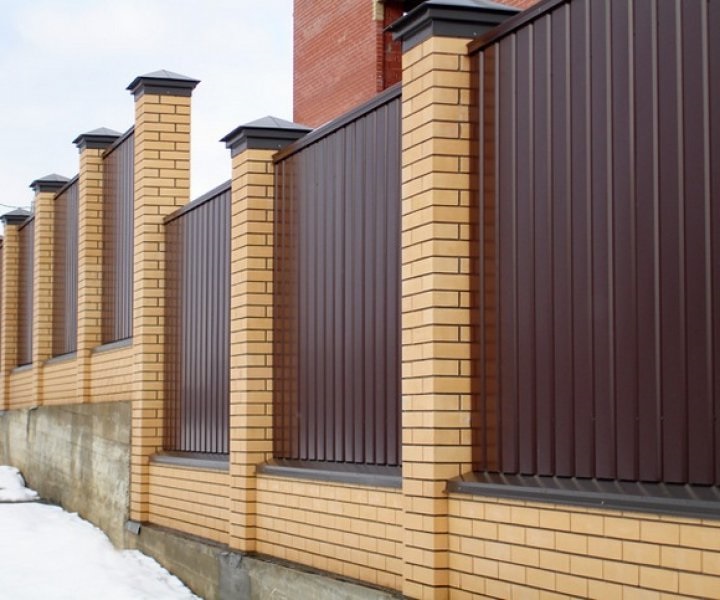
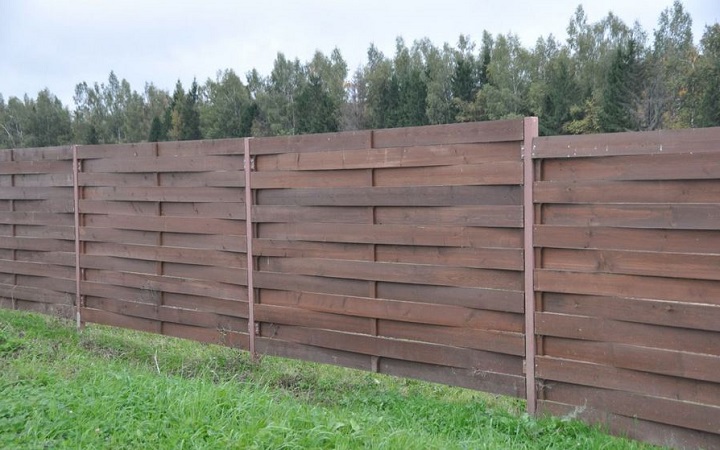
Choosing the Best Fence for Your Farm
Which fence choice is best for your property?
As with anything else, there are more and less expensive options for fencing.Fence design: gates, wickets

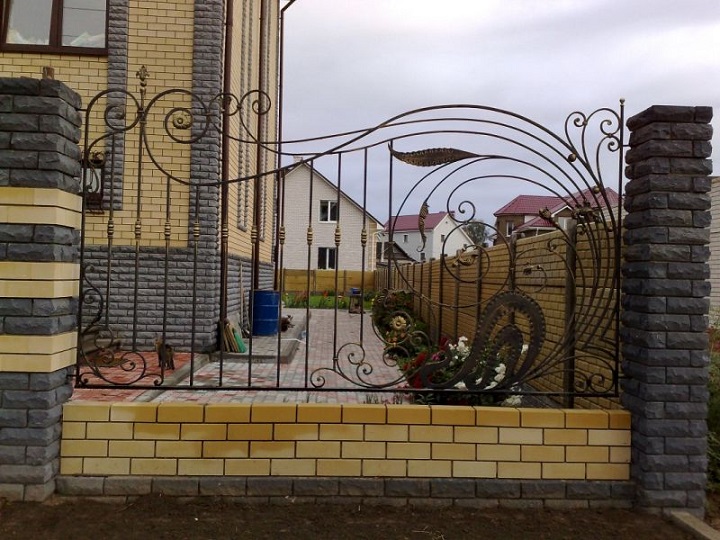
What materials are used in the construction of fences?

DIY wooden fence: technology, advantages, disadvantages
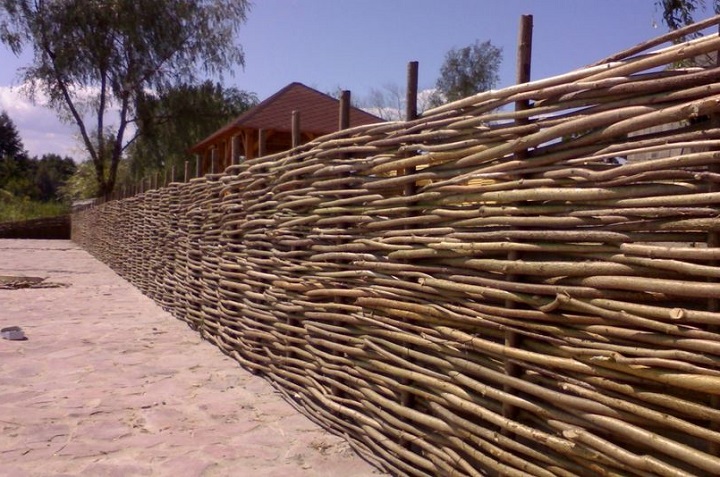
Step-by-step instructions for building a brick fence
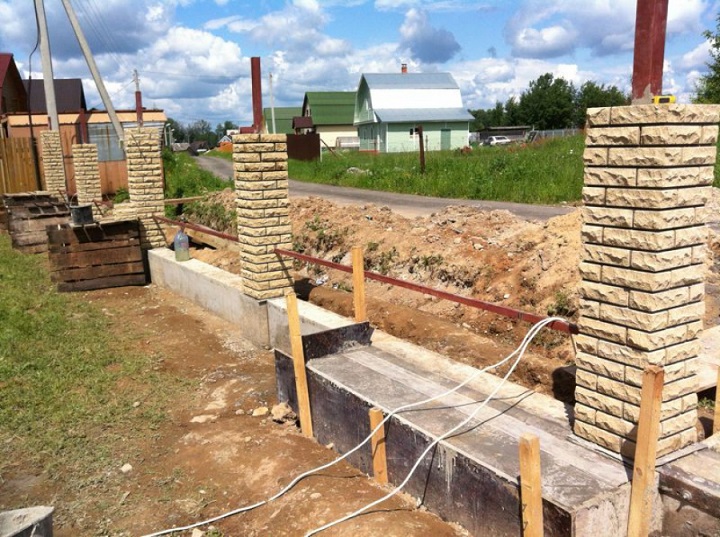
Metal fence
Forged gates
It seems that the topic of garden fences and fences is simply inexhaustible. New architectural solutions are emerging and forgotten ones are being revived. Fences greatly influence garden design and even the architecture of the entire building and country house in particular. Are you building Vacation home or just a dacha, you always want to have something bright, individual and different from others. Oddly enough, it is fences, due to their diversity, that are largely capable of satisfying such desires. In our review, we tried to show the diversity of fencing and help you choose the best option for you with recommendations.
Of course, the fence should protect against uninvited guests from entering your garden. Although, for the most part, all erected fences cope with this only psychologically: a fenced area is someone else’s property. But those who are not tormented by this will climb over any fence. And the “impregnable” fence for the majority of our citizens is comparable in cost to building a house. In addition, modern security systems protect against intrusion into the house much better than any fence. And the country houses themselves today are being built mainly in cottage villages with organized security.
Therefore, when choosing the type of fence, you should first of all take care of its aesthetic appearance and harmony with the house and garden. And there is plenty to choose from. Moreover, fences and fences began to be installed on the site itself, already with the design function of a garden landscape. According to the trends that we observe in our low-rise suburban construction, “solid” high stone or reinforced concrete fences are a thing of the past.
When choosing a fence, you should take into account the area where your home is located and the nature of the surrounding buildings. In a cottage community where perimeter security is centrally organized, there is no point in erecting an impenetrable stone fence around the house. In this case, the fence should only mark the boundaries of the site, become an architectural component of the erected buildings and a bright accent in the garden landscape. This could be a green hedge, a beautiful wooden fence made from a modern picket fence, or a combination fence (wood with stone, bushes, or artistic forged fencing).
“Deaf” wooden fences are also not appropriate here. And in order to prevent the entrance to the house and other garden areas from being visible from the street, appropriate plantings (bushes and trees) are carried out; the paths should not be straight, but winding. This approach is also correct from the point of view of landscape architecture.
A fence is a structure designed to last more than one decade. If you use chain-link mesh or metal profiles in it, they must have an anti-corrosion coating and it is better if it is also decorative, for example colored polymer coating. Save a lot of time and money. Such a fence will stand until you get tired of it and have to paint it. For your information, painting Chainlink mesh is not only a labor-intensive process, but also requires a very large amount of paint.
Impregnable walls around the house
High stone walls made of reinforced concrete, brick or natural stone It makes sense to build around a house (and not on all sides) that is remote from the village or located near a highway. Of course, such a fence will protect the house from noise, exhaust gases and dust from the road, and its owners will feel safer.

Some advice for those who decide to surround their house with an “impregnable” fence: the height of the fence should be proportional to the size of the house and cover it from the street no higher than the 1st floor; It is better to plaster the fence, and enliven its facade from the outside and inside with the simplest architectural elements, for example, a canopy and niches; smooth brick fence it will look more interesting if it is covered with tiles on top; such a fence on the side of the site must be planted with small trees or vines; It is appropriate to arrange rest areas and even gazebos near such a fence, and a walking path along the perimeter.
For village house, wherever it is located, this type of fence is simply inappropriate. A wattle fence, a hedge with green plantings or a plank fence fit perfectly into village architecture and if you make it even too original, it will not cause dissonance with the surroundings. It should be noted that when choosing architectural solution For a house being built in a village, and then a fence, the already established style of life and village traditions should be taken into account. Villages don’t like completely “blind” and very high fences. They deprive villagers of the opportunity to satisfy their curiosity and communicate with their neighbor, and in the absence of the latter, to look after his house.
So that you don’t have to rack your brains over what kind of fence to enclose your home, we offer a wide variety of fence options made from affordable materials. For summer cottages, village fences and hedges are also appropriate, but here it is also advisable to visually fence off the summer with green plantings.
A hedge is a universal fence. It is suitable for fencing a cottage and country house. The only difference is the bushes and trees used. If they tolerate pruning well, the architecture of such a fence can be anything. A trimmed “hedge” is a reliable obstacle for those who want to climb over the fence. For summer cottages and gardening, it is better to make such a fence from climbing and fast-growing vines such as ivy or vine. Bushes and trees with a strong root system are planted to fence only large areas and in cases where there are no other plantings nearby. Bushes and trees are planted on both sides and in a checkerboard pattern from the wire stretched between the posts.
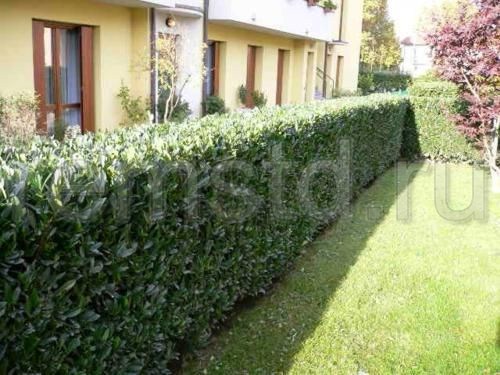
For planting along the fence, select bushes and low-growing trees with a small root system that tolerate frequent pruning (forming a green hedge) and maintain dense foliage from spring to late autumn. It should be borne in mind that plants pruned annually do not bloom or bear fruit. For an evergreen fence, we can recommend domestic juniper: it grows slowly and the desired crown is formed by pruning. Christmas trees are also good in a fence, but after 10 - 15 years they have to be uprooted: the root system grows too much, which prevents other plantings from growing, as a result of which they are only suitable for large areas.
For small areas, it is better to arrange a green fence with plantings of hops, ivy and virgin grapes (liana family): a small root system and rapid growth. The fact that the leaves fall from the green fence in the winter has its undeniable advantages for summer residents and gardeners. For the safety of the house, it will be better if, after the end of the summer season, the entire site is visible from the street. Depending on the bushes and trees planted, a hedge can become an insurmountable obstacle to entry into the area: regular pruning will make it strong and impenetrable.

In terms of labor costs and materials, a hedge is the most affordable fence. Along the border of the site they place racks made of steel pipes and a wire (in 2 - 3 rows) or a Chainlink mesh is pulled over them. The posts at the corners of the site, gates and gates, are made with struts to prevent them from being covered with tensioned wire. If space permits, bushes and trees are planted on both sides of the fence and in a checkerboard pattern. The choice of plants, bushes and trees requires knowledge: the time of appearance and fall of foliage, how the plant tolerates pruning, growth rate, what is its crown and root system, compatibility with other plants, etc.
The architecture of such fences can be varied: vines form a thin wall, and pruned bushes and trees form a thick one; the fence, depending on the alternation of bushes and trees in it, as well as the nature of pruning, can have the same height or vary in steps and even with spherical dominants. Different foliage colors allow you to create original color spots in such fences.
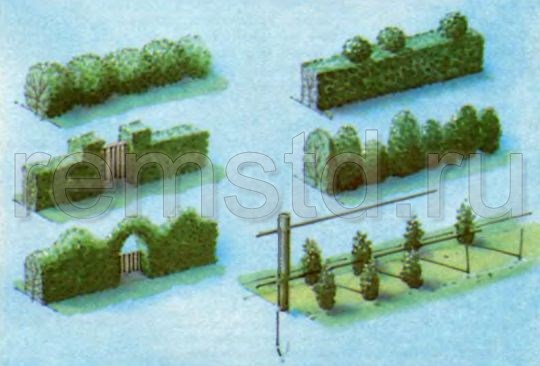
A “hedge” made of climbing vines is especially good for holiday villages and gardening: in summer it is a “blank” high wall, in winter the entire area is visible. Such a fence is appropriate along the road and between neighboring areas.
Country fences
Picket fences are varied. Given the similarity of designs, the selected picket fence changes the fence beyond recognition. A picket fence made of colored PVC or metal profiles will decorate even the most sophisticated cottage; from a board or round molding - rustic or country house. A picket fence made from ordinary poles, bamboo and even slabs, with appropriate finishing, is a good option for creating an original garden landscape. The picket fence can have different lengths, be mounted frequently or infrequently, and have a different tip shape. In combination with color finishing and combination with other fencing elements, the picket fence allows you to create fences that are very bright in originality.
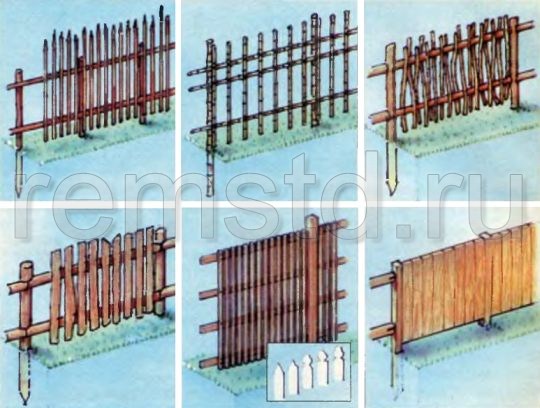
Picket fences are the easiest to construct and are distinguished by great variety, thanks to the choice of source material, shape and size of the picket fence itself. Picket fence - vertical slats mounted on horizontal bars between fence posts. Planed boards and bars, round moldings, thick poles, slabs, special metal and PVC profiles are used as picket fences. In a fence set, they can be the same or variable height and have a different shape at their upper end. The installation step of the picket fence allows you to make such a fence “deaf”, “translucent” and “transparent”. Regardless of the material of the picket fence, the fence must have a protective and decorative coating, which will make it not only beautiful, but also durable.
Fences such as wattle fence, undeservedly forgotten by our generation, are coming into fashion. It is very exotic, easy to make and, if properly processed, durable. In fact, the fence is woven like a basket from rods, poles and even thin boards. In order for the wicker to serve for a long time, it is coated with an antiseptic (does not rot) and a fire retardant (does not burn).
![]()
A modern wattle fence made of wooden blocks and slats is suitable for the border of two neighboring areas. Such fences and similar fences can be purchased ready-made, which will save a lot of time when building a fence.

A fence made from a modern picket fence is best suited for fencing a country house in a cottage community. Its lightness and ability to create a variety of architectural forms are impressive. It is made from high-quality solid boards, PVC profiles or profiled metal strips. Bold colors are used in its decoration.
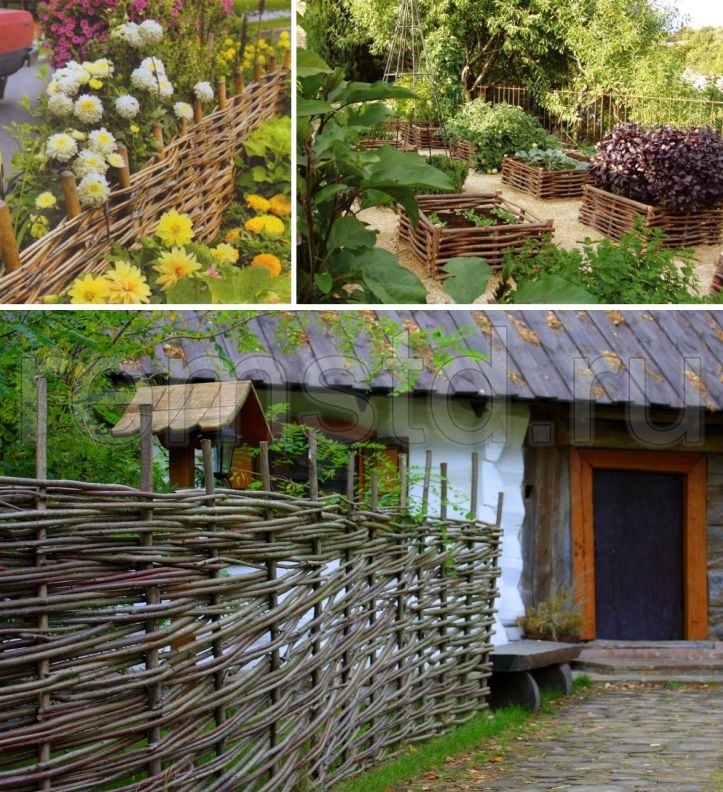
The fashion for classic wattle fences is returning. You can fence yourself off with a fence neighboring plot or make it part of your indoor garden landscape. With wattle fence you can decorate a terrace for relaxation and even a gazebo. The wattle fence, due to its naturalness, looks very interesting and harmonizes well with the garden. Such a fence is very durable and will serve you for decades if it is coated with an antiseptic (does not rot) and a fire retardant (does not burn). Any long twigs, branches and poles will be used, but the work will be long and painstaking.
Elegant fences for cottages
For owners of houses in cottage villages, we can recommend a number of combined fencing: a hollow stone wall filled with soil for planting perennial creeping plants; stone pillars on a plinth with various fillings of wood and metal gratings. Such fences, despite their small height, require a strip foundation.

The era of high fortress walls has ended, and it has been replaced by elegant and varied fences, which are an integral part of the overall architectural design of the site being built or the entire village.

It is better to enclose a small or medium-sized area with a house with a “transparent” fence, with small trees growing separately behind it. AND forged fence on stone pillars is not the worst option.

It makes sense to enclose a small front garden in front of the house, as a place to relax, with a solid and fairly high fence. The most successful solution may be a combined fence: the front part - pillars and plinth, made of natural or artificial stone, and the internal filling is densely assembled from a massive picket fence; the side parts adjacent to the wall of the house are made of the same picket fence in combination with evergreen trees such as thuja or juniper. Whatever “palace” you build for yourself, a fence around the perimeter of the site can make it even more interesting or, conversely, disfigure it.

There are fences for terraces, ponds and car parking areas. They have a small height and are internal fences. Their role is great in the decorative zoning of large garden plot. They do not fence the territory, but only mark its border. This type of fence has a lightweight base on which a metal decorative fencing, serving more as a railing. A chain suspended on posts or a fence can also be used for these purposes. The main thing is that such fences are appropriate and correspond to the design solution in the created garden landscape.

